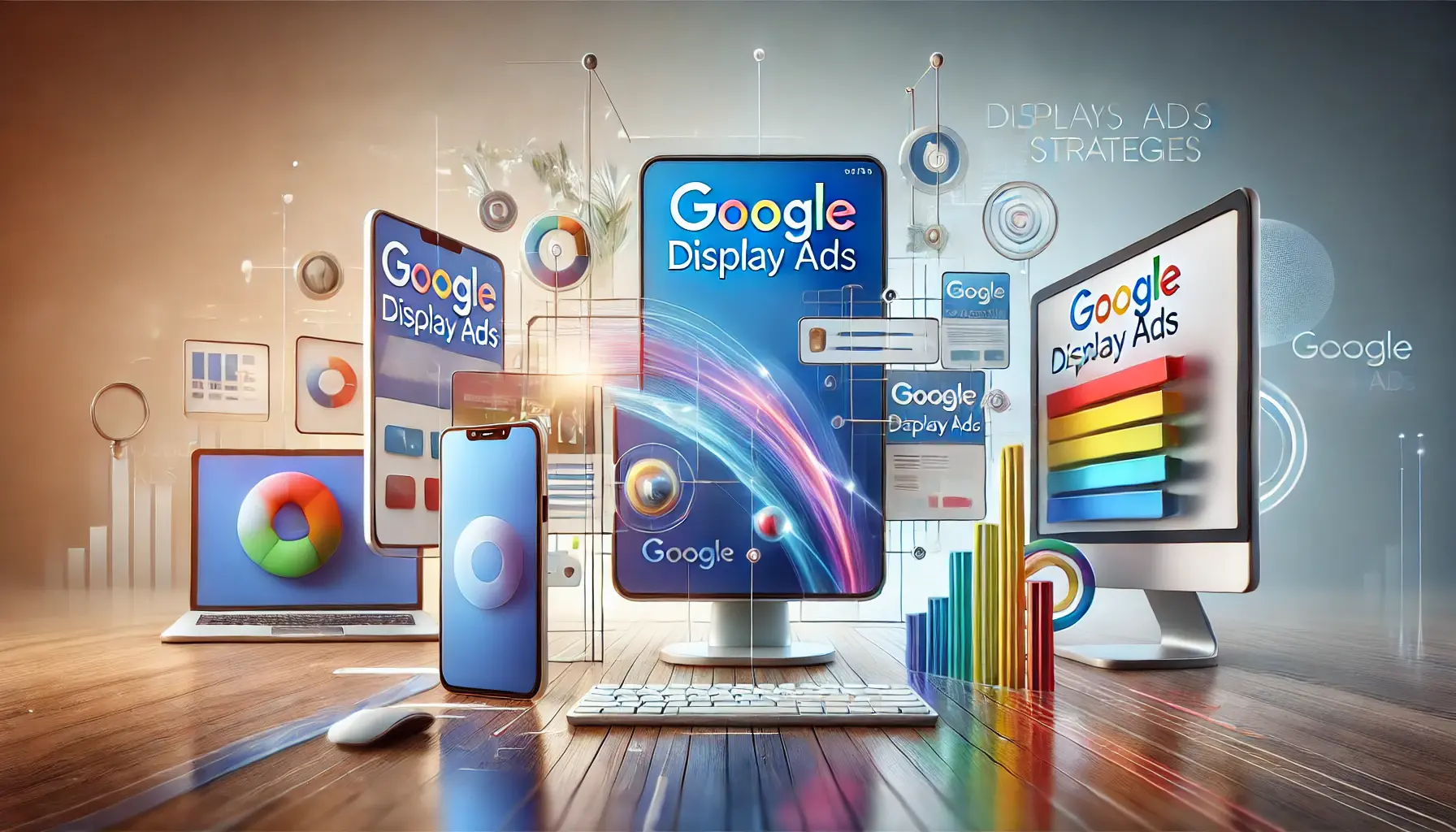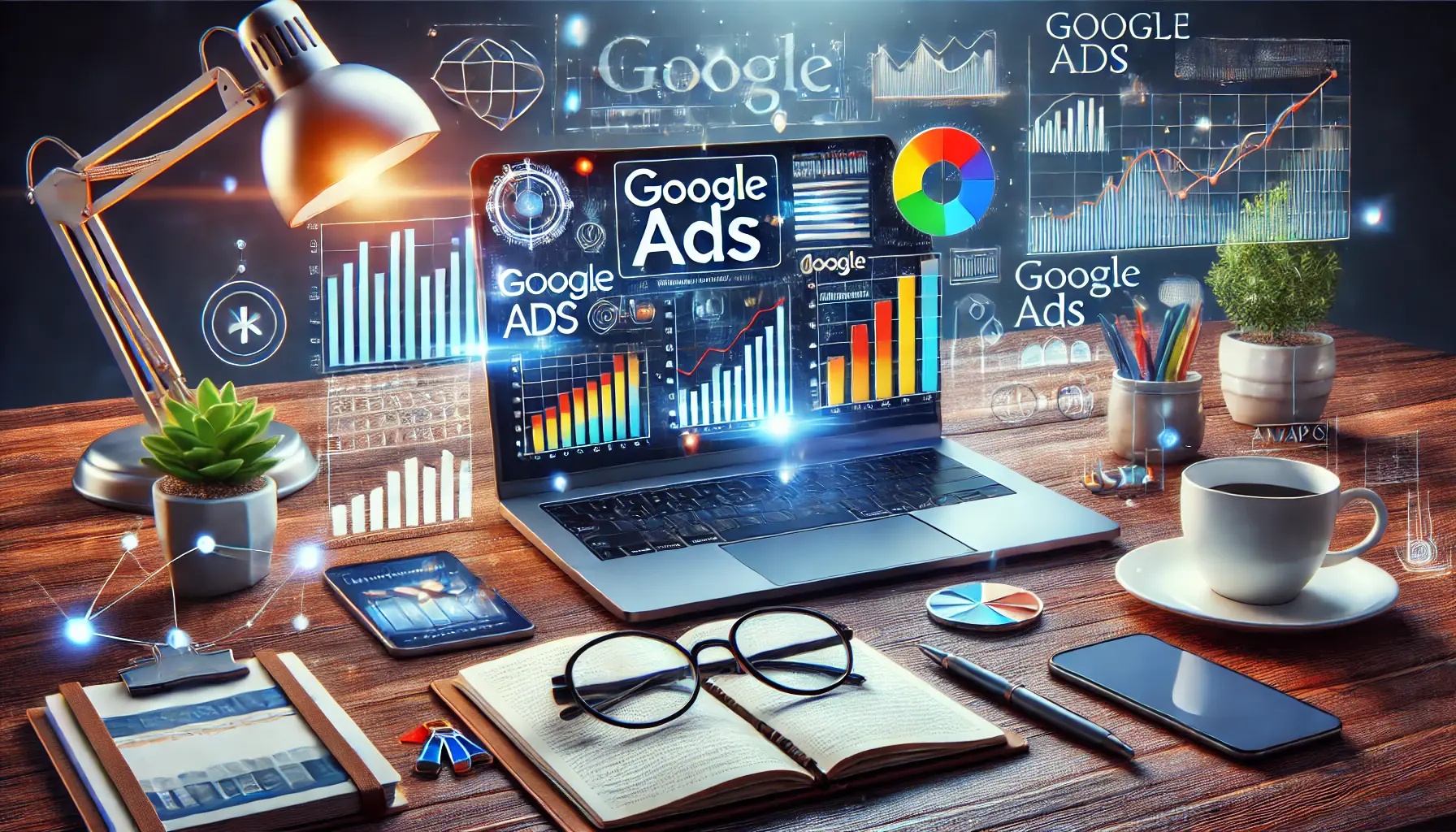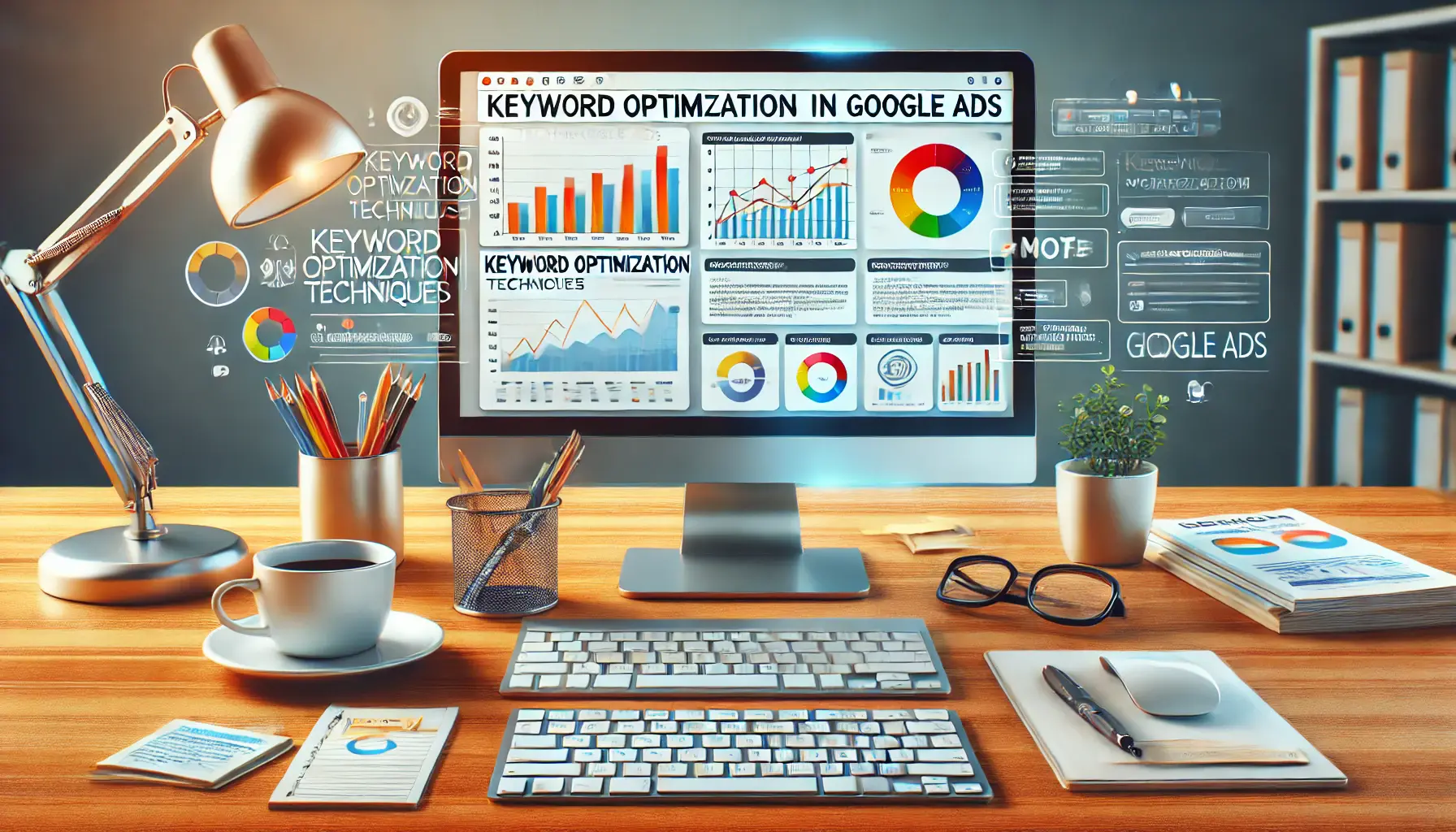In the fast-developing world of digital marketing, optimizing Google Ads has become a critical component for any company striving to stay on top.
Google Ads provides a high opportunity to target your desired audience, attract more traffic to your website, and increase its conversion rate.
However, running ads alone is not sufficient; knowing how to optimize them effectively is the key.
Whether you’re new to Google Ads or an experienced marketer, refining your techniques will go a long way toward determining the success of your campaign and overall ROI.
This article will discuss proven ways to optimize your Google Ads campaigns, starting with the fundamental concepts that serve as building blocks for successful and efficient ad campaigns.
- Understanding the Fundamentals of Google Ads Optimization
- Advanced Keyword Strategies for Effective Targeting
- Leveraging AI and Automation for Campaign Efficiency
- Optimizing Ad Copy and Creative Elements in Google Ads
- Monitoring and Analyzing Google Ads Campaign Performance
- Mastering the Art of Optimizing Google Ads
- Google Ads Optimization: Frequently Asked Questions
Understanding the Fundamentals of Google Ads Optimization
Before diving into advanced techniques, it’s essential to grasp the core components that influence your Google Ads performance.
These basics form the foundation for a successful campaign.
Let’s explore these crucial elements in detail.
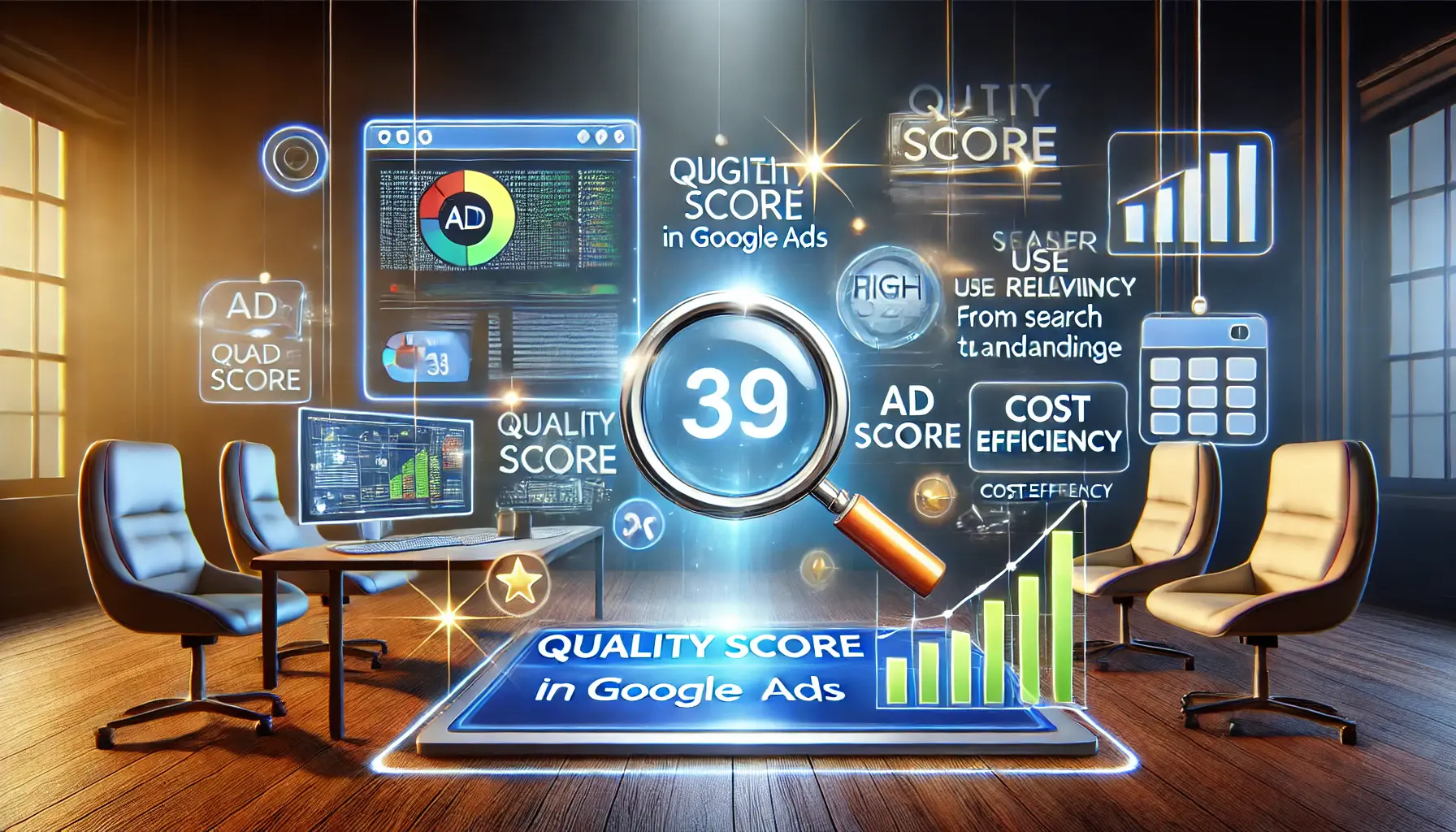
Visual representation of the significance of Quality Score in enhancing Google Ads performance.
The Importance of Quality Score in Ad Performance
Quality Score is one of the most important metrics in optimizing Google Ads.
It reflects the relevance and quality of your ads, keywords, and landing pages.
A higher Quality ScoreA metric in Google Ads that evaluates the relevance and quality of your ad, keyword, and landing page. not only improves your ad rank but also lowers your cost per click (CPCCost Per Click; the amount an advertiser pays for each click on their ad.).
Google uses this score to ensure that users see ads that meet their needs.
- Ad Relevance: Ensure your ad text aligns with the intent of the search queries.
- Landing Page Experience: Optimize your landing pages to provide a seamless and valuable user experience.
- Click-Through Rate (CTR): Create engaging ads that encourage users to click.
By enhancing your Quality Score, you can improve campaign performance and save money by reducing CPC.
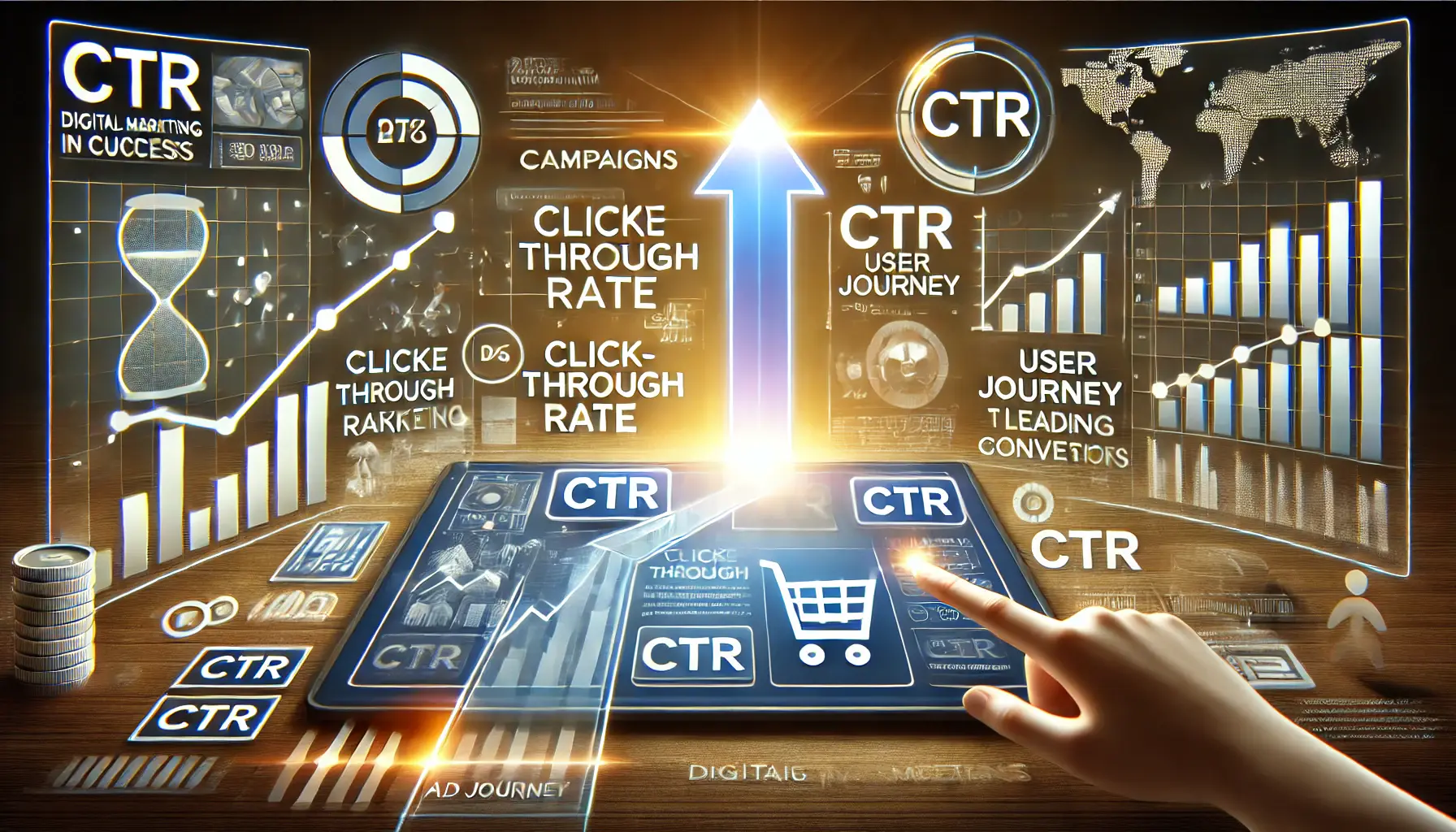
A visual depiction of how Click-Through Rate (CTR) drives campaign success in digital marketing.
Role of Click-Through Rate (CTR) in Campaign Success
CTR is a key indicator of how well your ads resonate with your target audience.
It is calculated by dividing the number of clicks your ad receives by the number of impressions it generates.
A high CTRClick-Through Rate; the ratio of users who click on an ad to the number of total users who view it. signifies that your ad is relevant and engaging.
- Create Engaging Headlines: Use actionable language and highlight unique selling points.
- Ad Extensions: Add extra information to your ads, such as call buttons or site links, to make them more useful for users.
- Test Your Ad Variations: Use A/B testing to identify what works and what doesn’t.
By increasing CTR, you have a better chance of converting visitors into customers while maintaining a strong Quality Score.

Visualizing the connection between ad relevance and landing page experience for successful digital campaigns.
Ad Relevance and Landing Page Experience
Your ad’s relevance and the experience users have on your landing page are closely tied to the success of your Google Ads campaign.
Google prioritizes ads that add value to users and direct them to useful, relevant pages.
- Ad Relevance: Ensure your ads match the intent behind user searches.
- Landing Page Speed: Optimize your landing pages to load quickly and avoid losing potential customers.
- Content Alignment: Deliver on the promises made in your ad copy with detailed and helpful information on the landing page.
By mastering these fundamentals, you lay the foundation for a well-optimized Google Ads campaign.
In the next section, we’ll explore advanced keyword strategies to refine targeting and improve overall performance.
Mastering the fundamentals such as Quality Score, CTR, and landing page experience is crucial for building a successful Google Ads campaign.

A depiction of advanced keyword strategies for precise audience targeting in digital marketing.
Advanced Keyword Strategies for Effective Targeting
Building upon the foundational aspects of Google Ads optimization, it’s time to delve into advanced keyword strategies that can significantly enhance your campaign’s effectiveness.
By refining your keyword approach, you can reach a more targeted audience, reduce wasted spend, and improve overall ad performance.

Visual representation of the process of conducting comprehensive keyword research in digital marketing.
Conducting Comprehensive Keyword Research
In simple terms, keyword research is the backbone of any Google Ads campaign.
To identify high-performing keywords, consider the following steps:
- Employ Google’s Keyword Planner: This free tool provides valuable insights into search volumes and trends to help you find relevant keywords for your business.
- Extract Competitors’ Keywords: Observe the keywords your competitors target to discover potential opportunities or gaps in your strategy.
- Focus on User Intent: Understand the motivations behind search queries to select keywords that align with what your potential customers are seeking.
By conducting thorough keyword research, you lay the groundwork for a more targeted and effective Google Ads campaign.
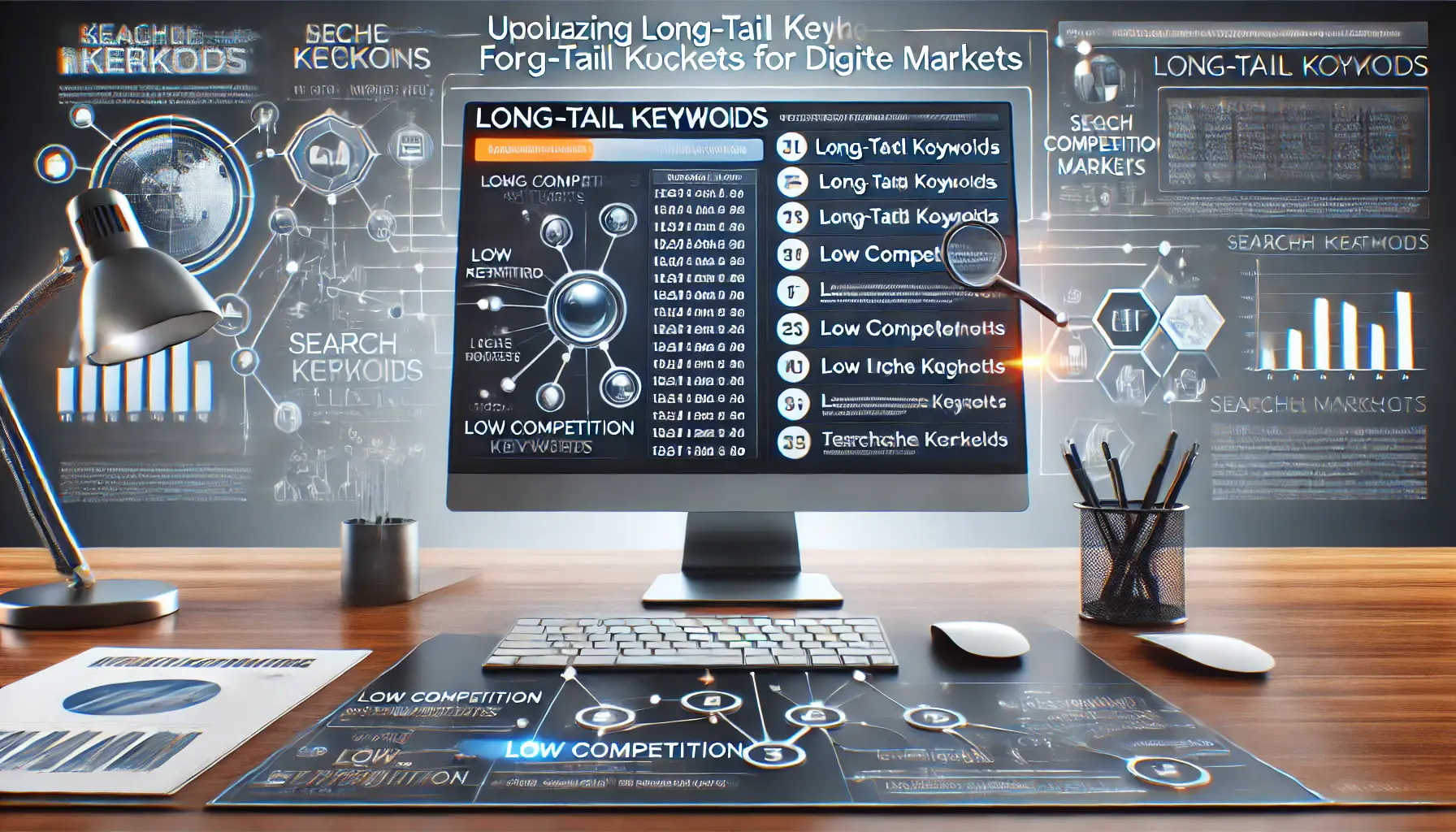
Depicting the strategic use of long-tail keywords to target niche markets in digital marketing.
Utilizing Long-Tail Keywords for Niche Markets
Long-tail keywords are longer, more specific phrases that, while having lower search volumes, often yield better conversion rates due to their precise nature.
The advantages include:
- Lower Competition: These keywords are usually less competitive, making it easier to secure better ad positions.
- Cost Efficiency: With reduced competition, these keywords generally result in a lower cost per click (CPC), enabling a more economical campaign.
- Higher Relevance: These keywords attract users with specific intentions, increasing the likelihood of conversions.
Incorporating long-tail keywordsSpecific, multi-word phrases with lower search volumes that often have higher conversion rates. into your strategy enables you to tap into niche markets and connect with highly interested prospects.

Visual representation of using negative keywords to improve audience targeting in digital marketing campaigns.
Implementing Negative Keywords to Refine Audience Reach
Negative keywords prevent your ads from appearing in irrelevant search queries, refining your audience reach.
To effectively implement negative keywordsKeywords that prevent ads from being shown for specific search queries, refining audience targeting., follow these steps:
- Identify Irrelevant Terms: Regularly review search term reports to pinpoint queries that are irrelevant to your offering.
- Use Exact Match Negative Keywords: Ensure your ads are not triggered by specific unwanted variations or phrases.
- Continuously Update Your List: As your campaign evolves, regularly add new negative keywords to maintain relevancy.
By adding negative keywords, you reduce wasted spend and make your Google Ads campaigns significantly more efficient.
In the following section, we will explore how leveraging AI and automation can further enhance your campaign efficiency and drive better results.
Focusing on advanced keyword strategies like long-tail keywords and negative keywords can help refine audience targeting and enhance ad performance.

Visualizing the integration of AI and automation to enhance efficiency in digital marketing campaigns.
Leveraging AI and Automation for Campaign Efficiency
In today’s digital marketing landscape, integrating artificial intelligence (AI) and automation into your Google Ads campaigns is essential for staying competitive.
These technologies streamline processes, enhance targeting precision, and optimize performance in real-time, allowing you to achieve better results with less manual effort.

Showcasing the advantages of AI-powered campaigns in improving marketing efficiency and precision.
Benefits of AI-Powered Campaigns
AI-powered campaigns offer several advantages:
- Real-Time Optimization: AI processes massive volumes of data to adjust bids, targeting, and ad placements in real time, maximizing performance at any moment.
- Improved Targeting: Machine learning algorithms detect patterns in user behavior, enabling more precise audience segmentation and personalized ad delivery.
- Time Savings: Automation reduces the need for constant monitoring and adjustments, freeing up time for strategic planning and creative development.

Visualizing the implementation of smart bidding strategies for optimized campaign performance.
Implementing Smart Bidding Strategies
Smart Bidding utilizes machine learning to set bids automatically, helping you achieve specific goals such as maximizing conversions or achieving a desired return on ad spend (ROASReturn on Ad Spend; a metric that measures the revenue generated for every dollar spent on advertising.).
Key Smart BiddingA Google Ads feature that uses machine learning to automate and optimize bids for better campaign results. strategies include:
- Target CPA (Cost Per Acquisition): Sets bids to get as many conversions as possible at the target cost per acquisition you set.
- Target ROAS (Return on Ad Spend): Adjusts bids to maximize conversion value based on the return you want from your ad spend.
- Maximize Conversions: Automatically sets bids to help achieve the most conversions within your budget.
By implementing Smart Bidding, you enable Google’s AI to make informed decisions that drive efficiency and performance.
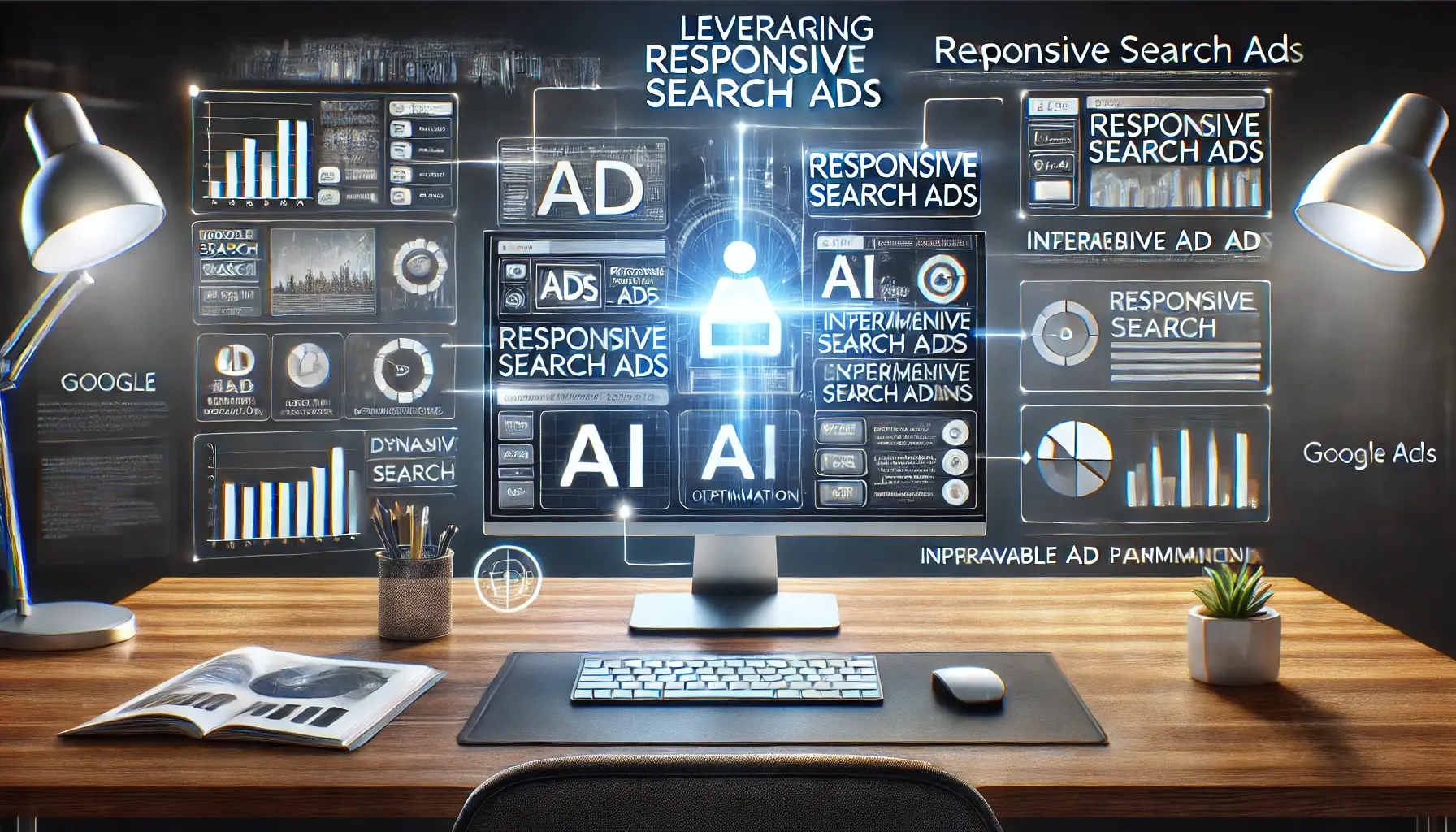
Showcasing the use of responsive search ads to optimize ad performance and target diverse audiences.
Leverage Responsive Search Ads
With Responsive Search AdsAn ad type in Google Ads that allows multiple headlines and descriptions, which are automatically tested by Google to optimize performance. (RSAs), you can input multiple headlines and descriptions, and Google’s AI will test combinations to determine which perform best for specific queries.
Advantages of RSAs include:
- Increased Ad Relevance: AI tailors ad combinations to better match user search intent.
- Broader Reach: Multiple headlines and descriptions increase opportunities to win auctions and match diverse searches.
- Better Performance: Continuous testing and optimization result in improved click-through rates (CTR) and conversion rates.
Incorporating RSAs into your campaigns ensures your ads remain dynamic and relevant for a wide range of search intents.
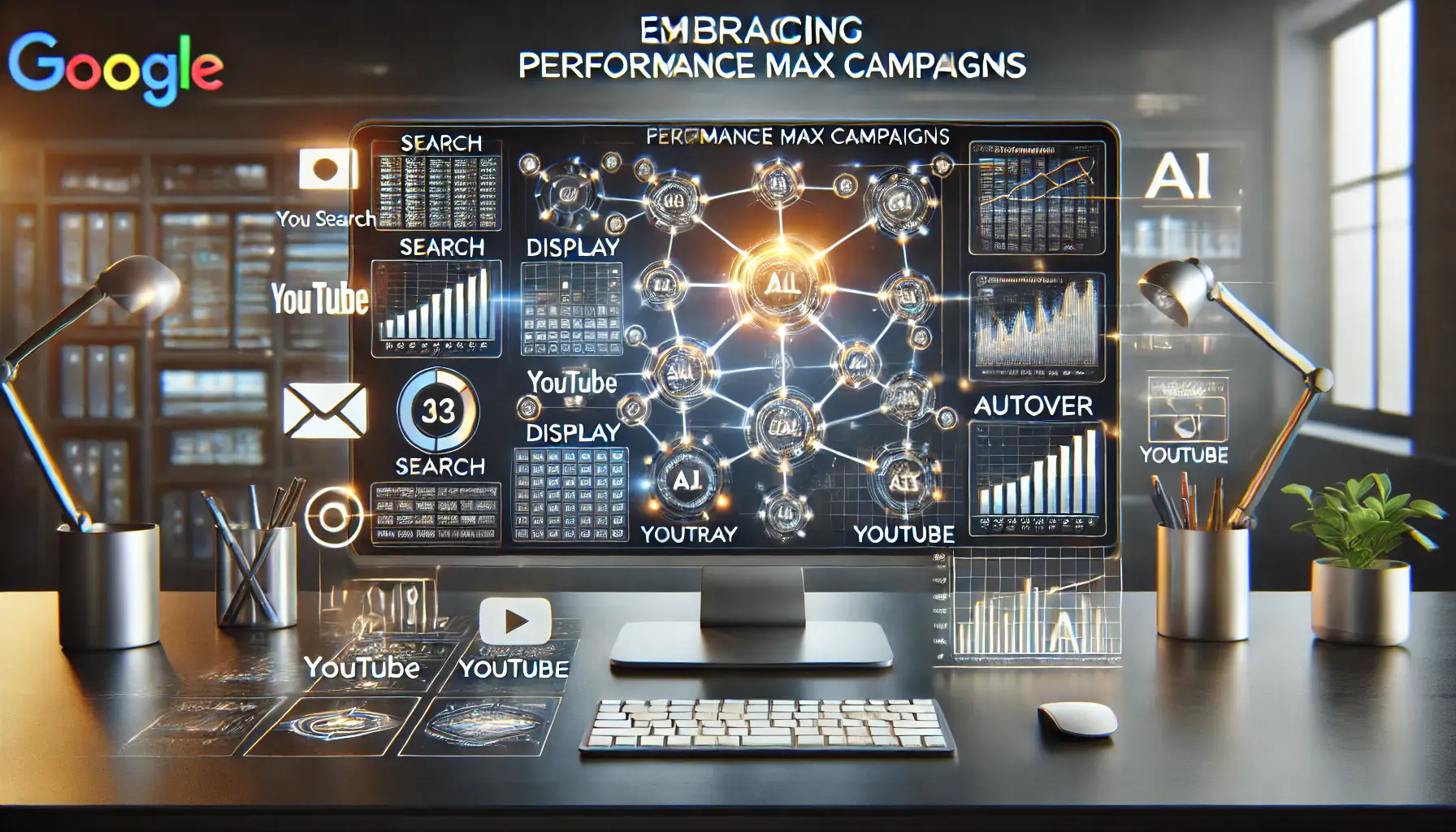
Visualizing the full-spectrum optimization of ad campaigns using Performance Max strategies.
Embracing Performance Max Campaigns
Performance Max campaigns use AI to maximize performance across all Google channels, including Search, Display, YouTube, and Discover.
Advantages of Performance MaxA Google Ads campaign type that uses AI to optimize ad performance across multiple channels, including Search, Display, and YouTube. include:
- Full Reach: Access all of Google’s inventory within one campaign, ensuring maximum visibility.
- Automated Asset Creation: Google AI generates, tests, and identifies the best-performing ad creatives, formats, and combinations.
- Goal-Oriented Optimization: Campaigns are optimized towards specific objectives, such as driving online sales or generating leads.
Adopting Performance Max campaigns allows for a holistic and AI-driven advertising strategy, ensuring your ads reach the right audience at the right time across all platforms.
By embracing AI and automation in your Google Ads strategy, you can bring more efficiency to your campaigns, improve performance, and stay ahead in the competitive digital marketing arena.
AI-powered campaigns and Smart Bidding strategies can significantly improve efficiency by automating optimization and decision-making processes.
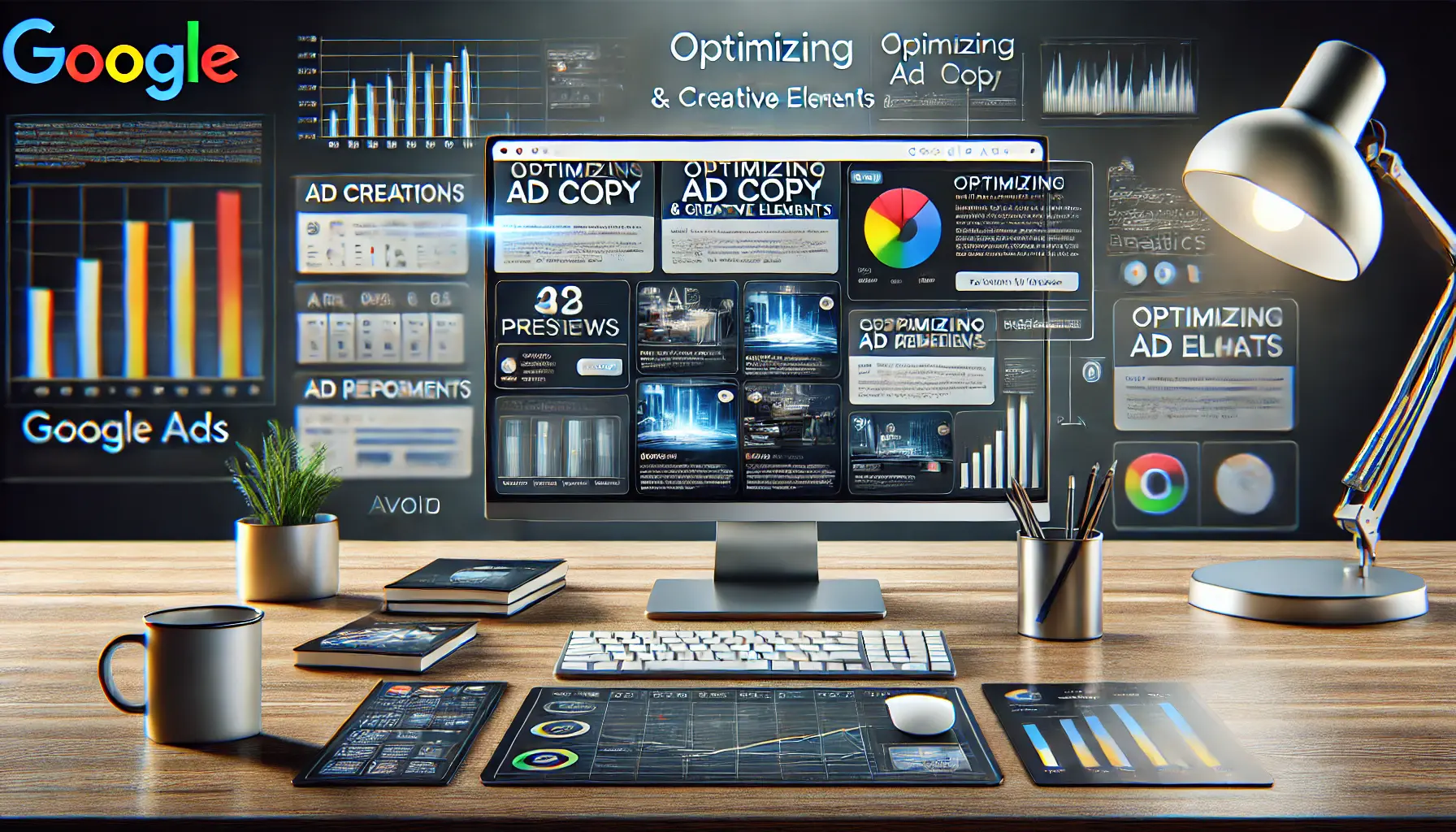
Highlighting the process of optimizing ad copy and creative elements for better performance in Google Ads.
Optimizing Ad Copy and Creative Elements in Google Ads
Crafting compelling ad copy and utilizing effective creative elements are crucial for optimizing Google Ads campaigns.
Well-structured ads not only capture attention but also drive higher click-through rates (CTR) and conversions.
Let’s explore strategies to enhance your ad content.

Showcasing the creative and strategic process of writing compelling ad copy for digital campaigns.
Writing Compelling Ad Copy
To create engaging ad copy that resonates with your audience, consider the following practices:
- Know Your Audience: Position your messaging in a way that addresses the needs and preferences of your target demographic.
- Highlight Unique Selling Propositions (USPs): Showcase what sets your product or service apart from the competition.
- Include Strong Calls to Action (CTAs): Encourage users to take desired actions with clear and persuasive language.
- Use Relevant Keywords: Integrate keywords naturally into your ad copy to increase relevance and improve your Quality Score.
By focusing on these elements, your ad copy will be more likely to engage users and drive desired outcomes.
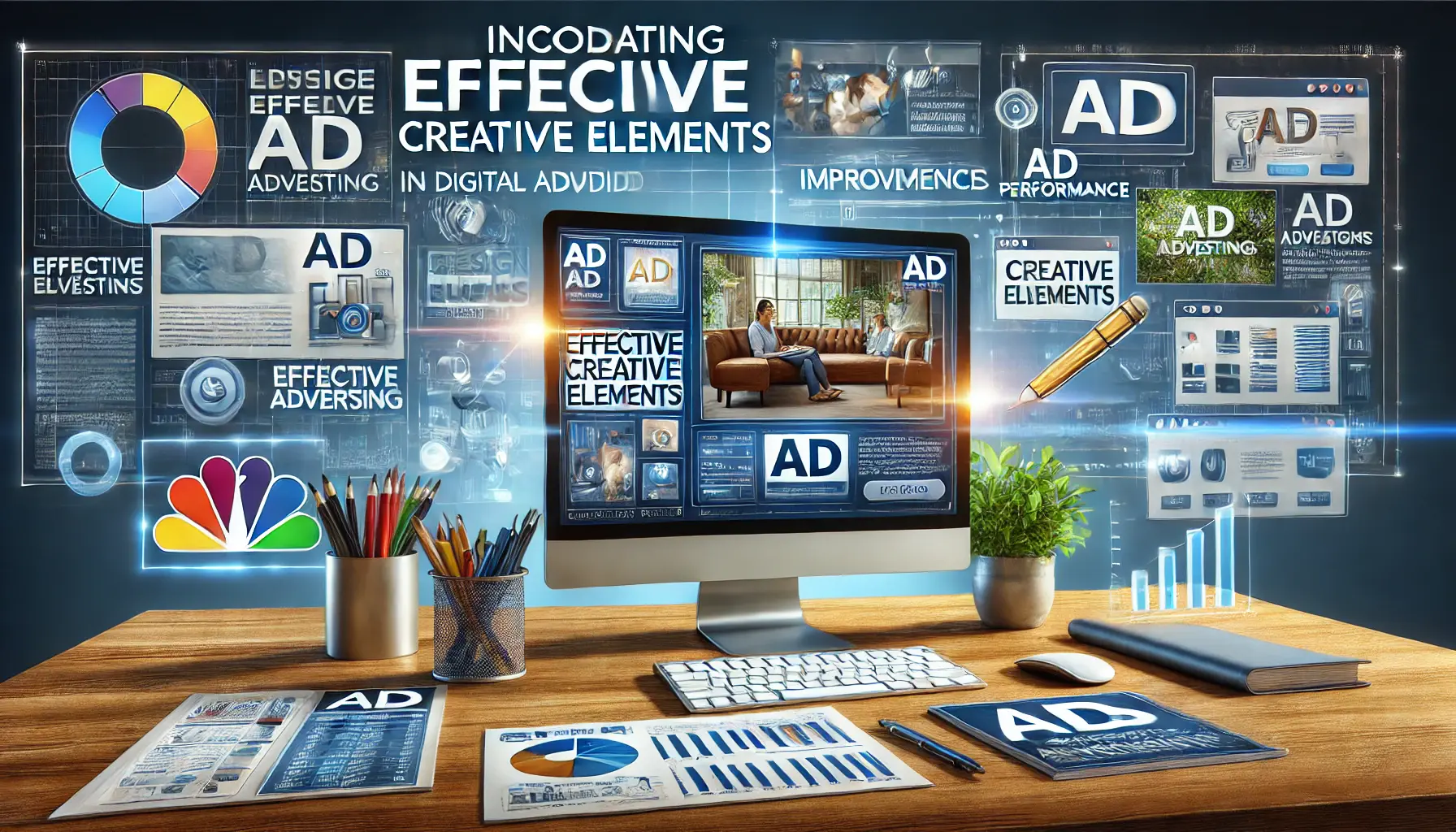
Highlighting the importance of incorporating effective creative elements for impactful digital advertisements.
Incorporating Effective Creative Elements
Beyond text, visual components play a significant role in ad performance.
To optimize creative elements, consider the following:
- Use High-Quality Images and Videos: Ensure visuals are clear, relevant, and professional to capture and retain users’ attention.
- Maintain Consistent Branding: Align creative elements with your brand identity to build recognition and trust.
- Test Different Formats: Experiment with various ad formats, such as responsive display ads, to determine what works best for your audience.
Incorporating these practices will enhance the visual appeal and effectiveness of your ads.
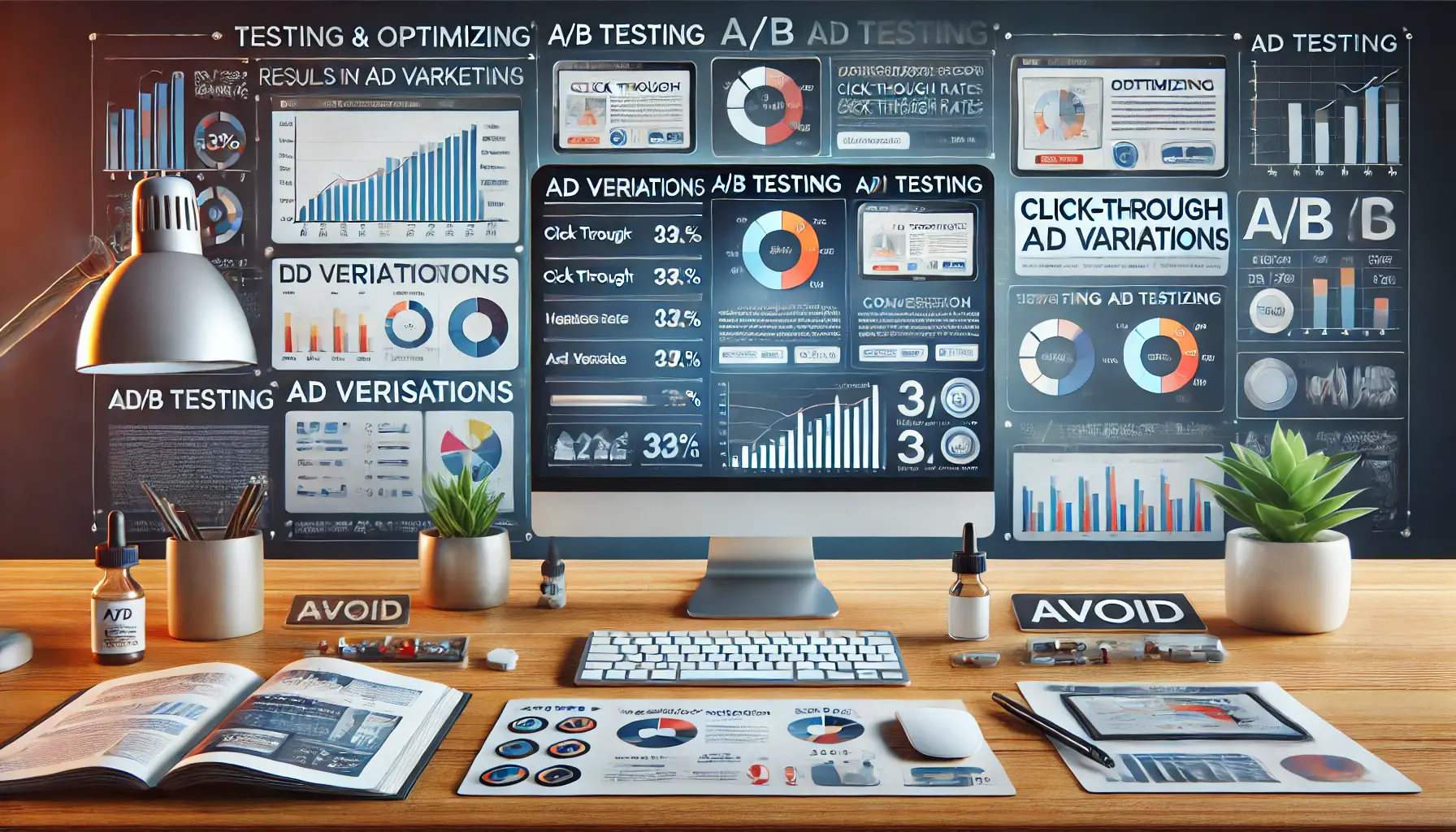
Showcasing the process of testing and optimizing ad variations for improved campaign performance.
Testing and Optimizing Ad Variations
Continuous testing and optimization are key to maintaining high-performing ads.
Implement the following strategies:
- Conduct A/B Testing: Create multiple ad variations to test different headlines, descriptions, and visuals, identifying which combinations yield the best results.
- Analyze Performance Metrics: Monitor CTR, conversion rate, and Quality Score to assess ad effectiveness and identify areas for improvement.
- Refresh Creative Assets Regularly: Update your ad creatives periodically to prevent ad fatigue and keep your audience engaged.
By following these strategies, you can ensure your ads remain relevant, engaging, and effective.
Next, we’ll explore tips and best practices for optimizing your landing pages to provide the best possible user experience.
Crafting compelling ad copy with strong CTAs and leveraging effective creative elements are essential for driving higher CTR and conversions.
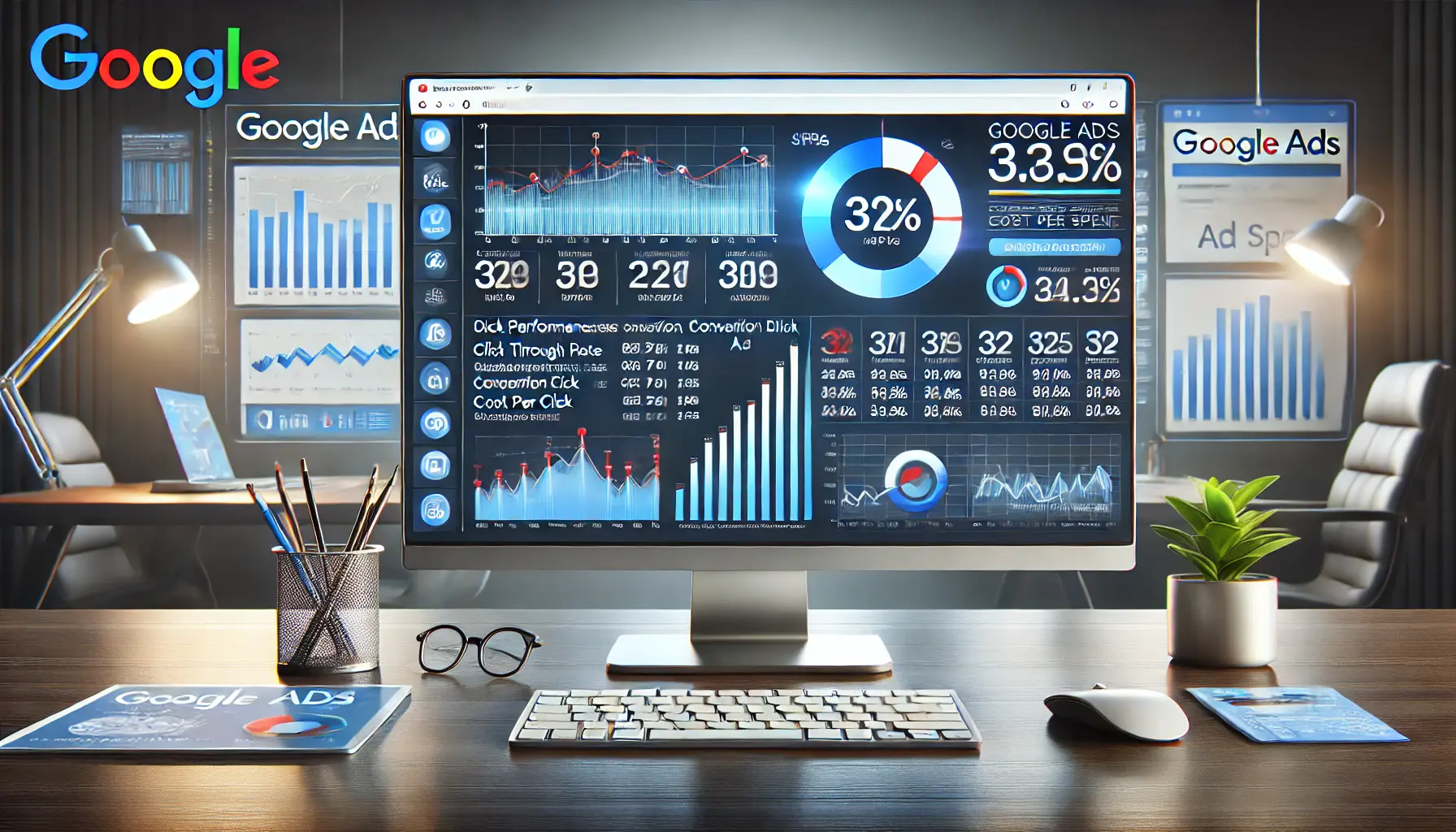
Highlighting the importance of monitoring and analyzing performance metrics in Google Ads campaigns.
Monitoring and Analyzing Google Ads Campaign Performance
Effectively monitoring and analyzing your Google Ads campaigns is essential for optimizing performance and maximizing return on investment (ROI).
By consistently evaluating key performance indicators (KPIs), you can make informed decisions to enhance your advertising strategy.
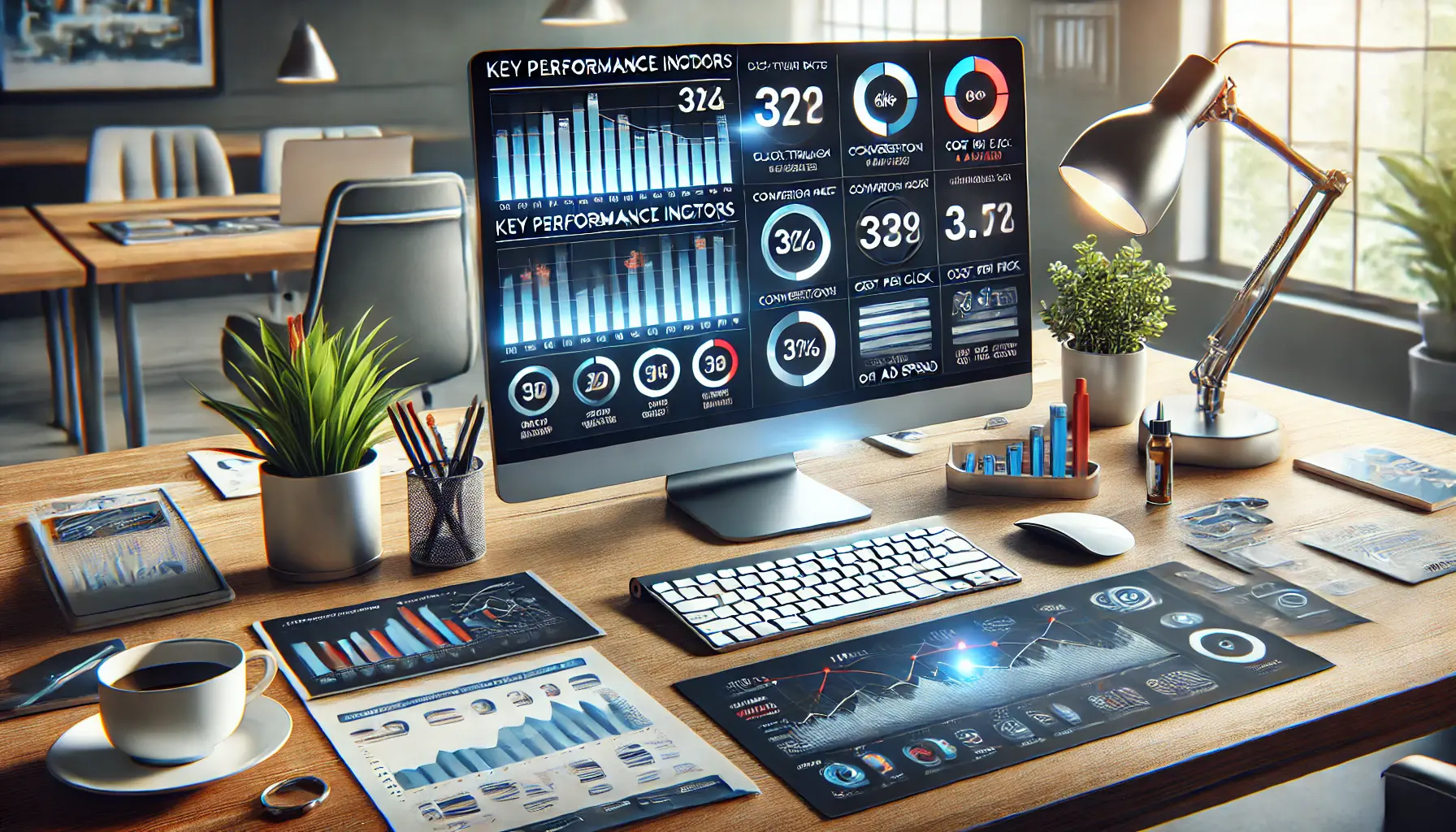
Showcasing the importance of tracking key performance indicators in digital marketing campaigns.
Key Performance Indicators (KPIs) to Track
Monitoring the right KPIs provides insights into your campaign’s effectiveness.
Essential metrics include:
- Click-Through Rate (CTR): The percentage of users who click on your ad after seeing it. A high CTR indicates that your ad is engaging and relevant to your audience.
- Conversion Rate (CVR): The percentage of clicks that result in a desired action, such as a purchase or sign-up. Monitoring CVR helps assess the effectiveness of your landing pages and overall campaign.
- Cost Per Click (CPC): Reflects the average amount you pay for every click on your ad. Keeping CPC within your budget is crucial for economical campaigns.
- Cost Per Acquisition (CPA): The average cost of acquiring one customer. Lowering CPA while maintaining or increasing conversions improves ROI.
- Return on Ad Spend (ROAS): Calculates the revenue generated for every dollar spent on ads. A higher ROAS signifies a more profitable campaign.
Regularly reviewing these KPIs enables you to identify areas for improvement and adjust your strategies accordingly.
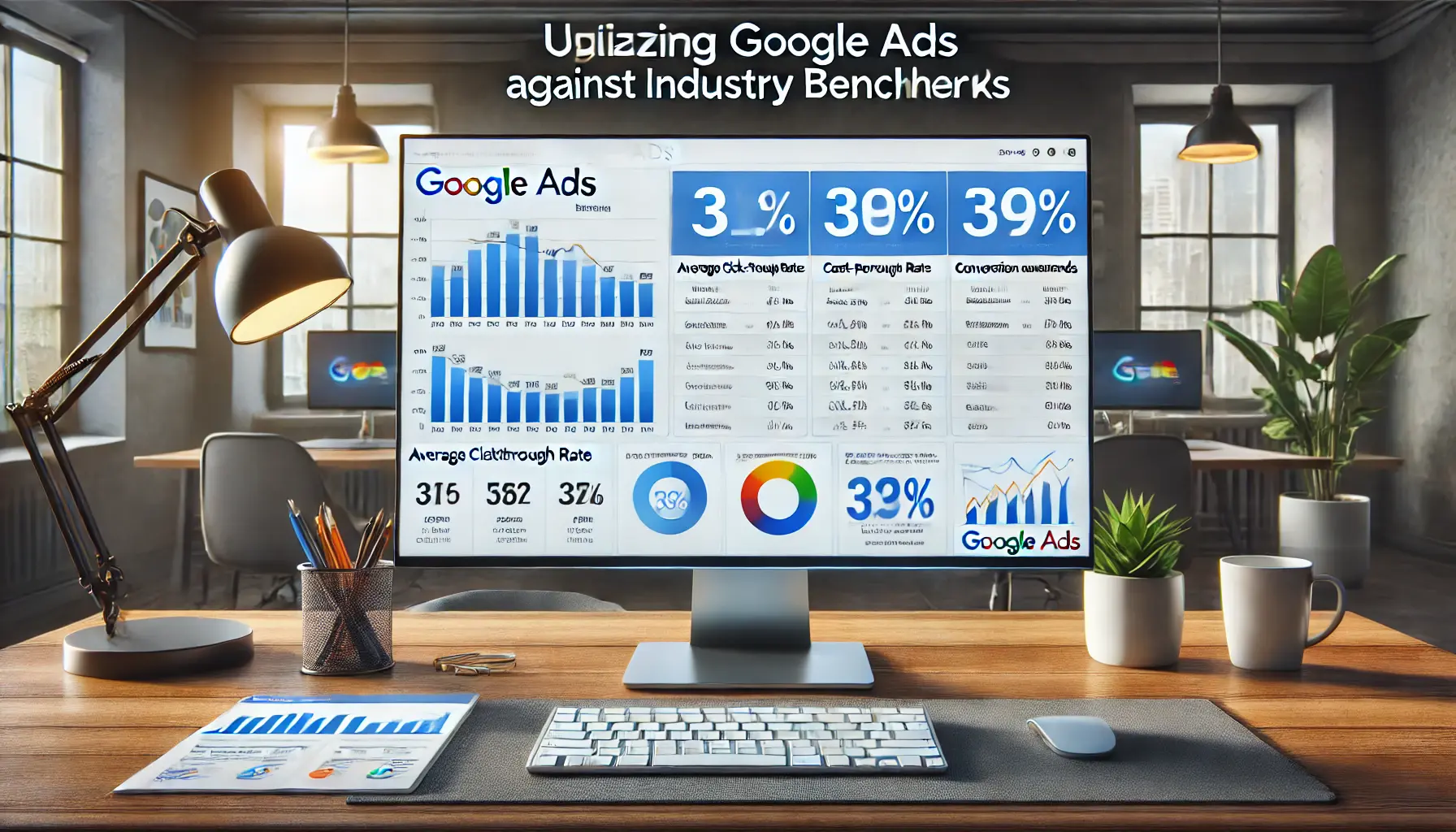
Highlighting the use of Google Ads benchmarks for optimizing digital marketing campaigns.
Utilizing Google Ads Benchmarks
Comparing your campaign metrics against industry benchmarks helps gauge performance.
For instance, understanding average CTRs or CPCs in your industry provides context for your results.
According to recent data, the typical cost per click in Google Ads in 2025 stands at $4.22.
By benchmarking your KPIs, you can set realistic goals and identify opportunities for optimization.
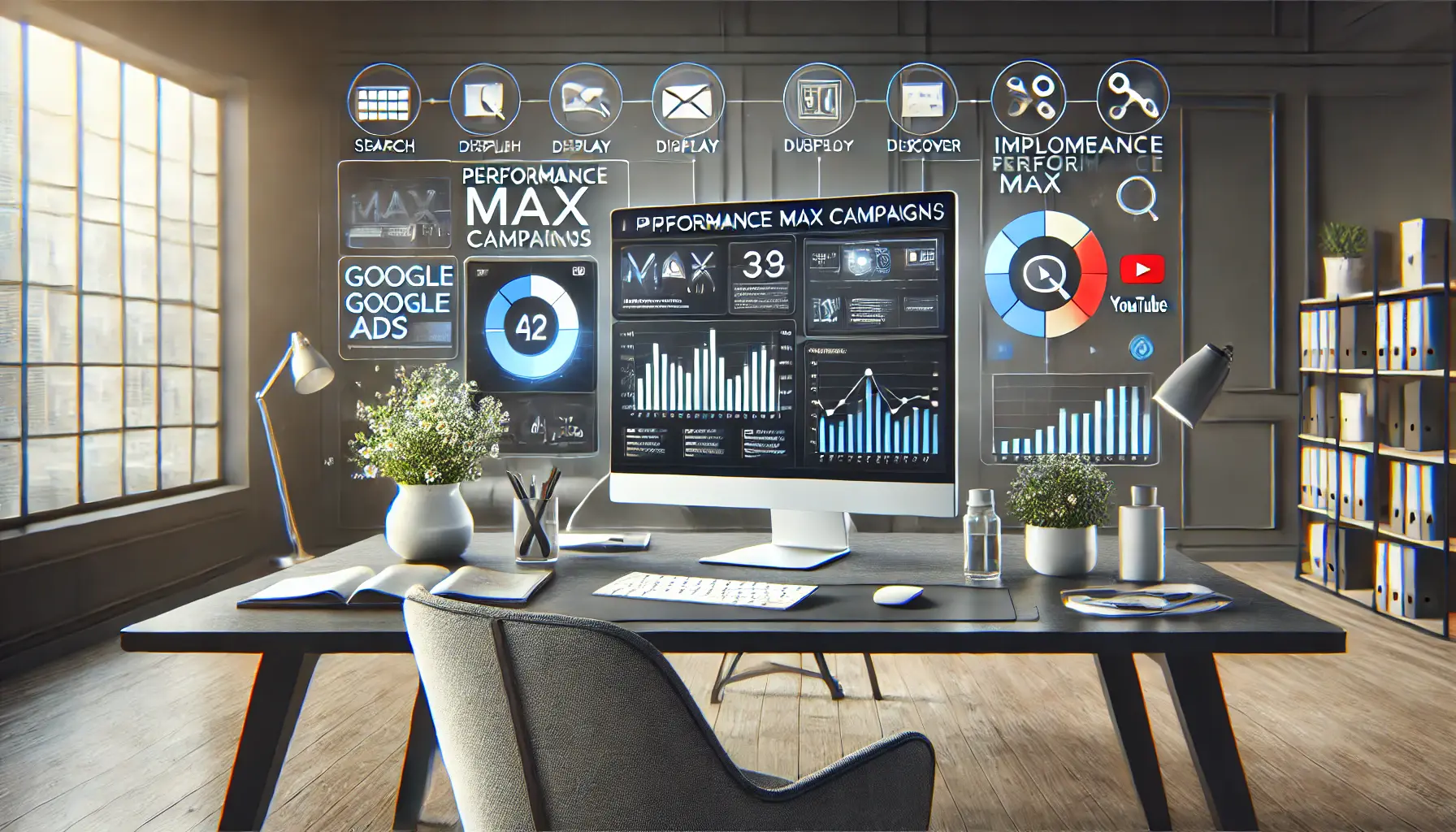
Highlighting the integration and efficiency of Performance Max campaigns in digital marketing.
Implementing Performance Max Campaigns
Performance Max campaigns tap into Google’s machine learning capabilities for optimization across channels.
To achieve maximum output, consider the following:
- Campaign Duration: Always run your campaigns for a minimum period of six weeks. The algorithm needs sufficient time to ramp up and learn.
- Audience Signals: Applying relevant audience lists as signals accelerates the ramp-up process and enhances results from machine learning.
- Asset Utilization: Provide as many assets as possible, including text, images, and videos, to improve ad relevance and reach.
Implementing these practices can lead to more efficient and effective campaigns.
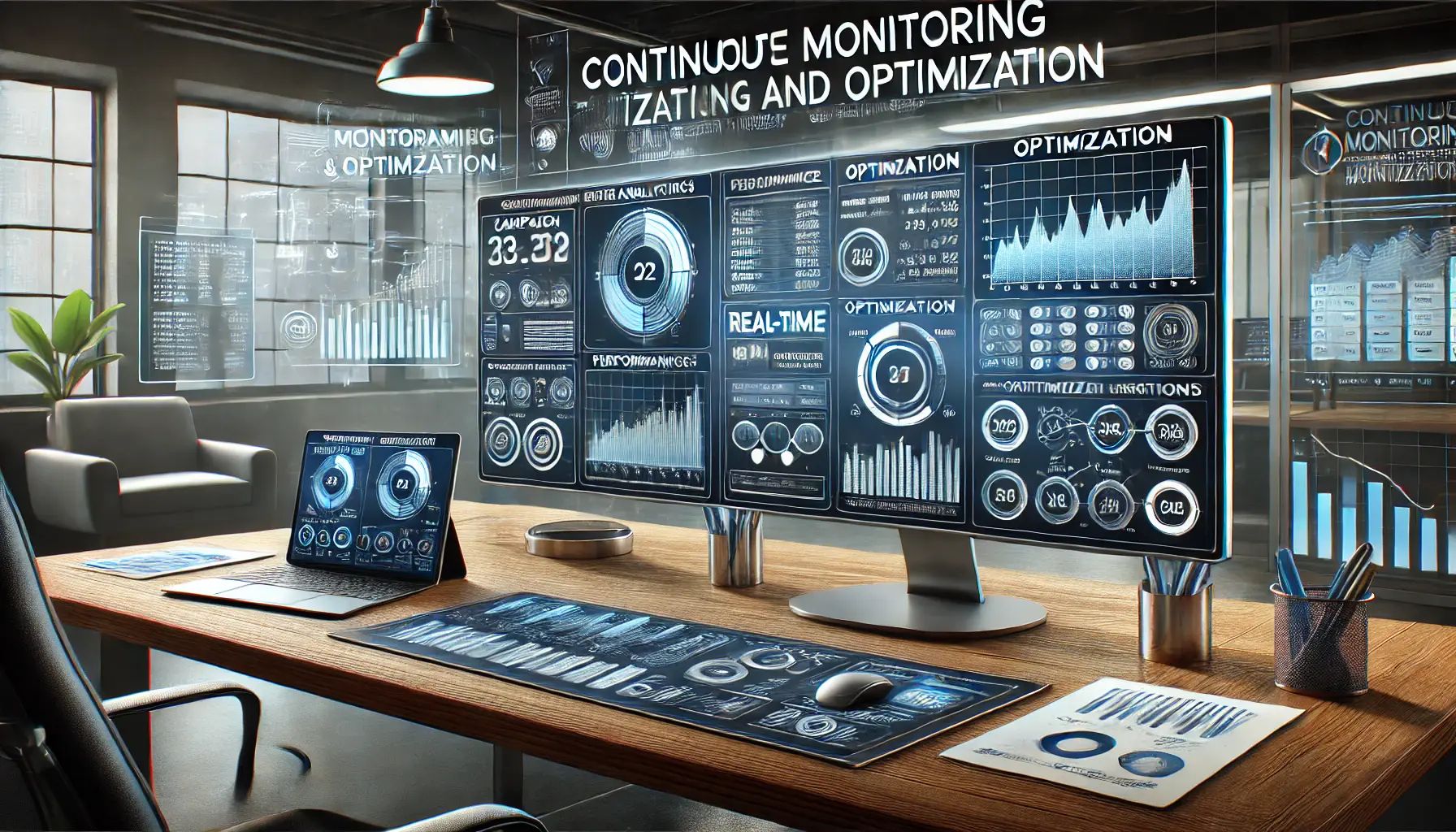
Showcasing the importance of continuous monitoring and optimization in managing digital campaigns.
Continuous Monitoring and Optimization
Regular analysis and adjustments are vital for sustained success.
Consider the following practices:
- Set Up Conversion Tracking: Implement conversion tracking to measure the outcomes of customer interactions with your ads.
- Analyze Performance Data: Use Google Ads and Analytics data to analyze bounce rate, average session duration, and pages per session, among other metrics.
- Adjust Bidding Strategies: Based on performance data, adjust bids to optimize cost-efficiency and achieve your goals.
By ongoing monitoring and refining your campaigns, you can make positive improvements toward meeting your advertising objectives.
The next section will provide insight into how you can optimize your landing pages for seamless and effective user experiences.
Consistently monitoring key performance indicators (KPIs) like CTR, CPACost Per Acquisition; the average cost of acquiring one customer through your ads., and ROAS is vital for making informed adjustments and optimizing your campaigns.
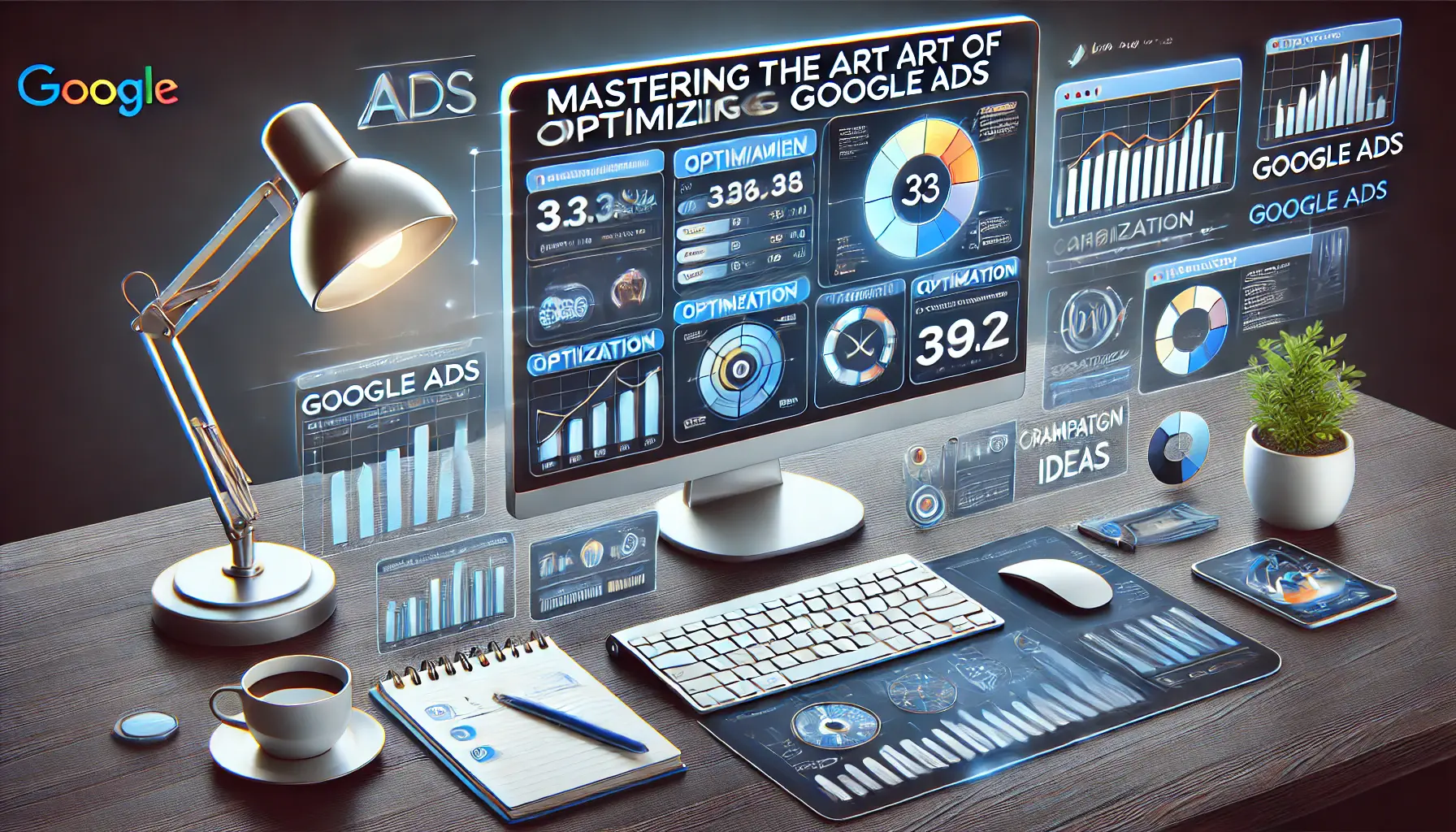
Highlighting the expertise and strategies involved in mastering Google Ads optimization.
Mastering the Art of Optimizing Google Ads
Optimizing Google Ads is not merely a task but an ongoing process that requires dedication, strategic planning, and continuous analysis.
Throughout this article, we’ve explored a range of techniques and strategies designed to help you create, manage, and refine your campaigns effectively, ensuring optimal results and a strong return on investment (ROI).
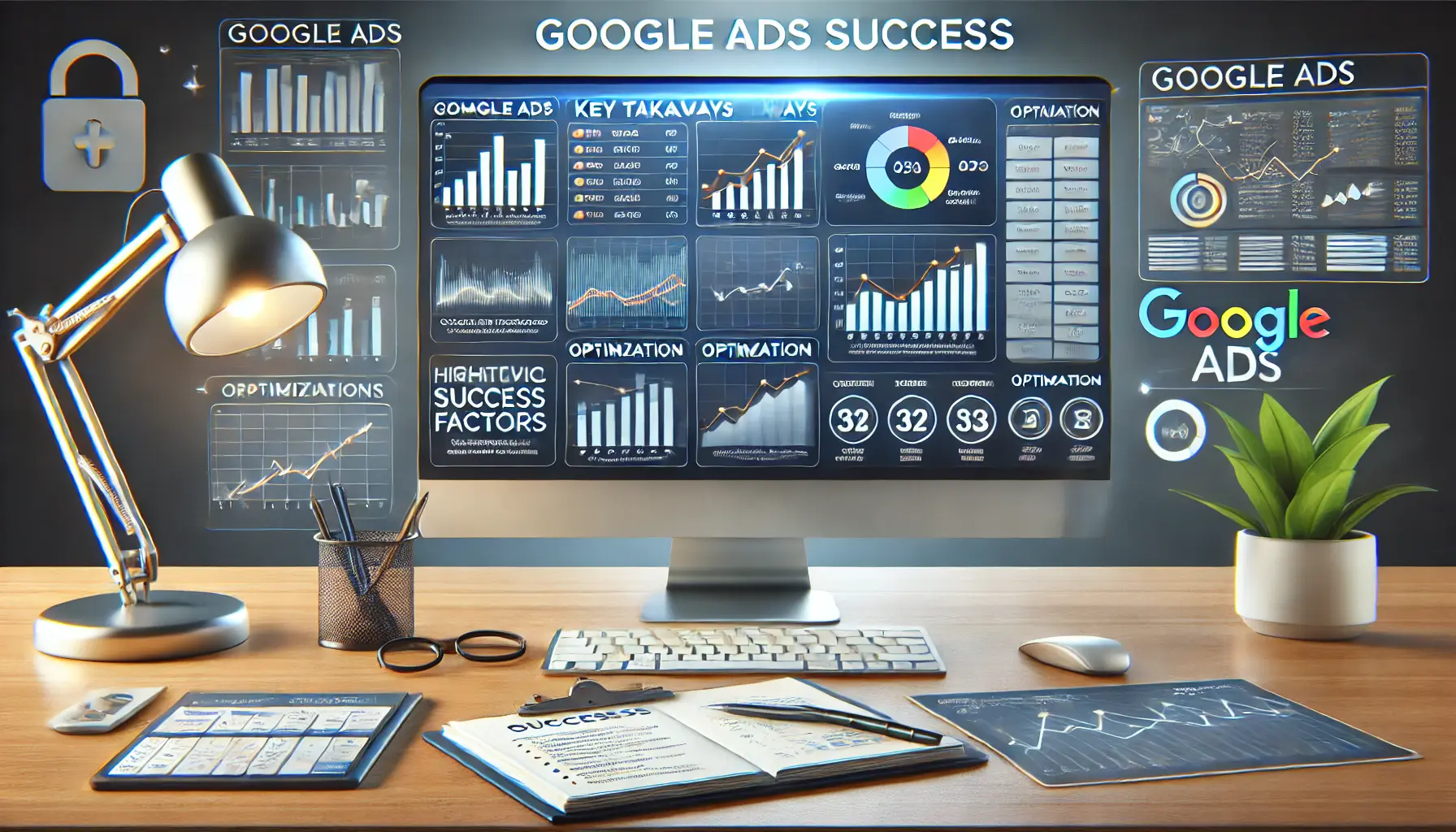
Highlighting the essential strategies and takeaways for achieving success in Google Ads campaigns.
Key Takeaways for Google Ads Success
The key takeaways from this guide are as follows:
- Understand the Basics: A solid foundation of Quality Score, Click-Through Rate (CTR), and landing page experience is the basis for campaign success.
- Leverage Advanced Keyword Strategies: Conduct extensive keyword research, utilize long-tail keywords, and apply negative keywords to refine audience targeting.
- Adopt AI and Automation: Leverage AI-powered tools such as Smart Bidding, Responsive Search Ads, and Performance Max for simplifying processes and amplifying outcomes.
- Create Compelling Ad Creative: Write appealing ad copy, include effective creative elements, and run tests on ad variations to ensure consistent performance improvements.
- Monitor and Analyze Performance: Regularly track key performance indicators (KPIs) such as CTR, CPA, and ROAS, benchmark against industry standards, and make data-driven adjustments.

Visualizing strategies to stay ahead in digital marketing and maintain a competitive edge.
Maintaining a Competitive Edge
Staying competitive in the dynamic digital marketing landscape requires a proactive approach.
By continuously monitoring campaign performance and embracing innovation, such as AI tools and machine learning algorithms, you can stay ahead of the competition while optimizing costs and increasing ROI.
Remember, Google Ads is an ever-evolving platform, and its effectiveness depends on your ability to adapt to new trends and technologies.
Regularly update your strategies to align with changing user behaviors and market conditions.
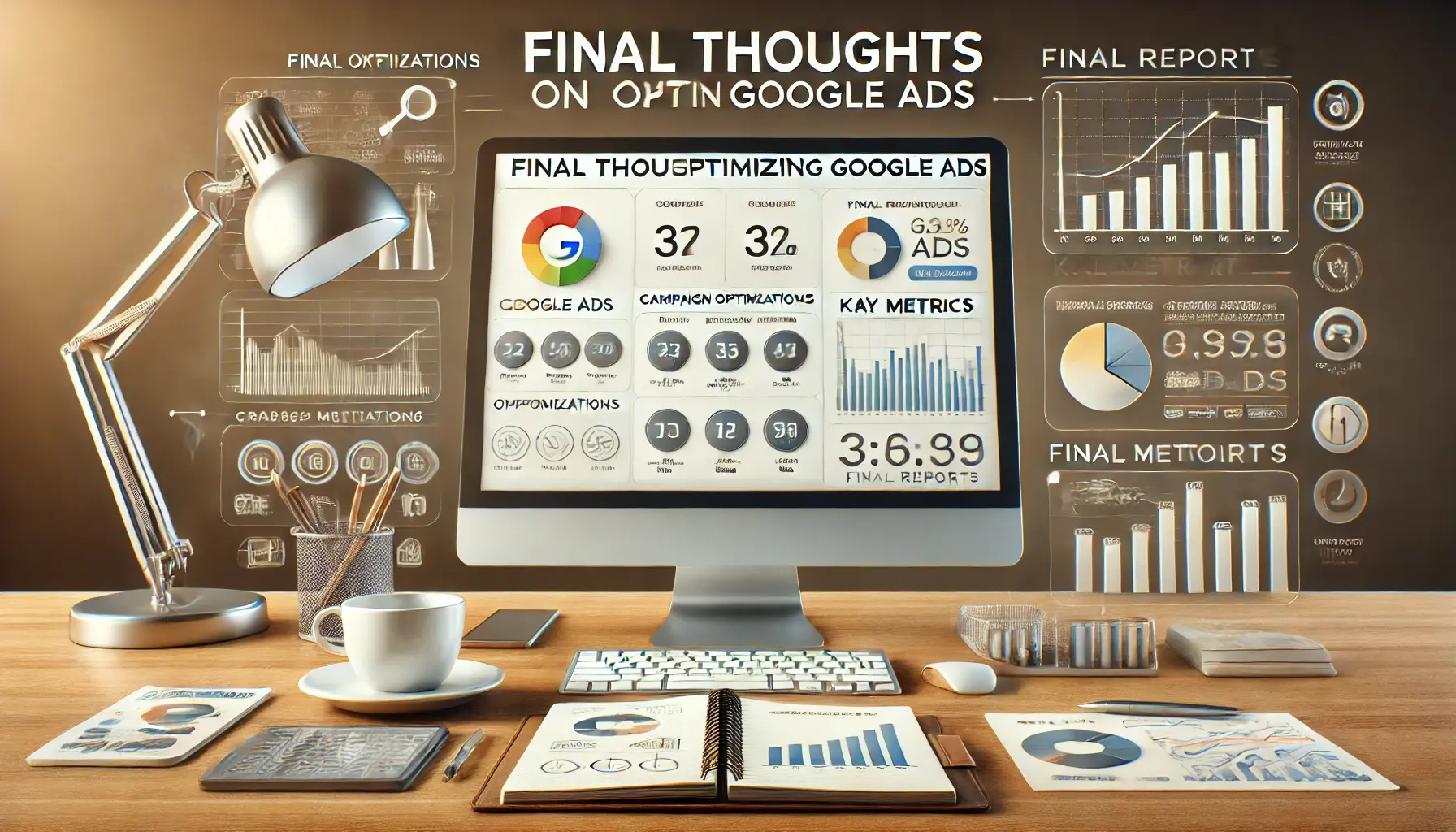
Reflecting on key strategies and insights for optimizing Google Ads campaigns effectively.
Final Thoughts on Optimizing Google Ads
Whether you are just getting started or trying to refine existing campaigns, the strategies discussed in this article provide a roadmap to success.
Each step, from understanding the fundamentals to leveraging advanced tools and techniques, is an integral part of building high-performing campaigns.
By applying these practices to your Google Ads strategy, you can enhance audience targeting, maximize conversions, and achieve your business goals.
The journey to mastering Google Ads optimization can be long and challenging but is undoubtedly rewarding.
Continuous refinement, monitoring, and adaptation to market trends are necessary to stay competitive and maximize the ROI of Google Ads campaigns.
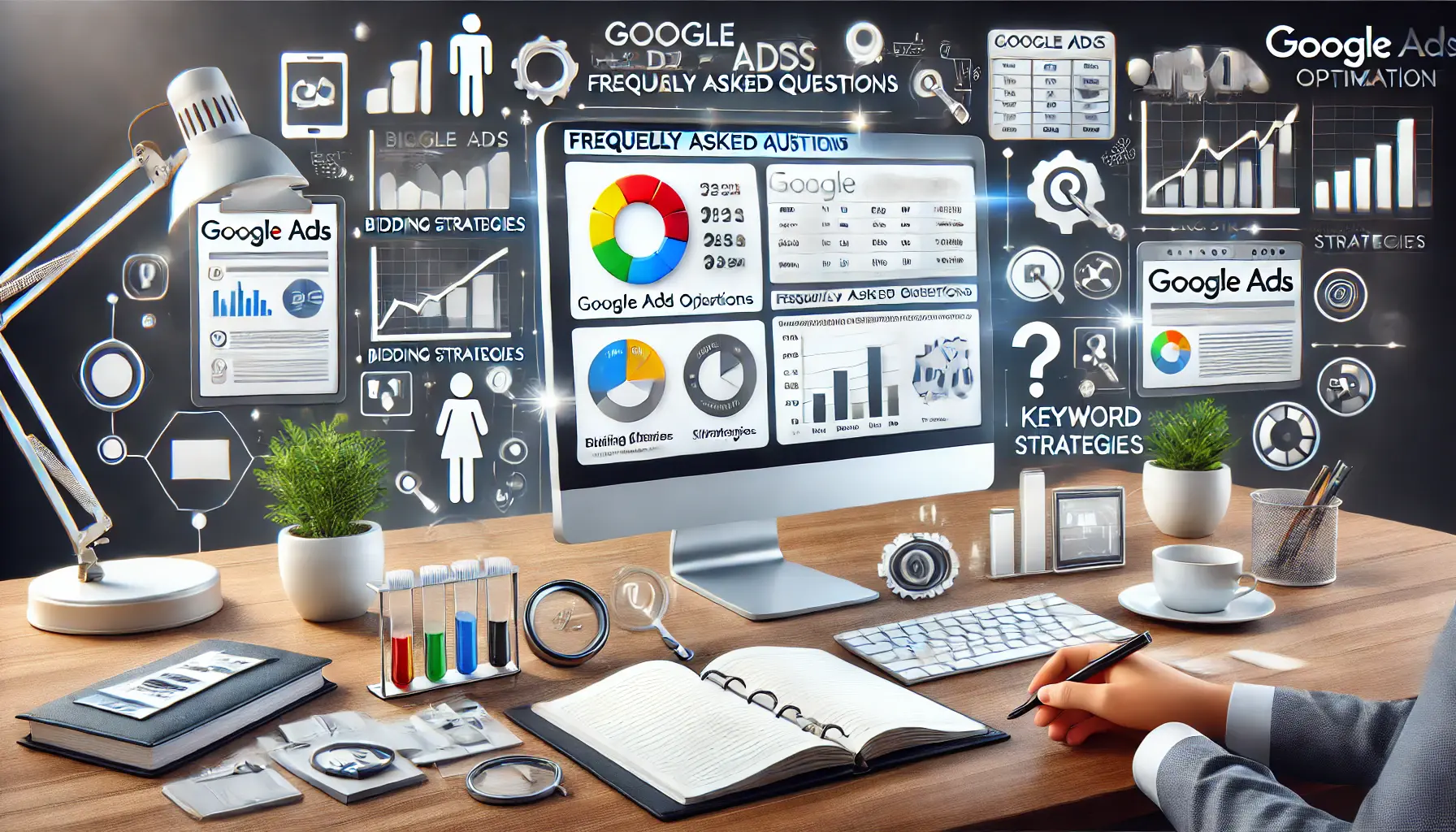
Providing clarity and practical solutions to common questions about Google Ads optimization.
Your campaigns can be managed by an agency specialized in Google Ads, check out our service page.
Google Ads Optimization: Frequently Asked Questions
Below are some common questions and concise answers to help you optimize your Google Ads campaigns effectively.
Quality Score is a metric that evaluates the relevance and quality of your ad, keyword, and landing page.
It directly affects your ad’s position and cost per click (CPC).
Improve your Quality Score by building relevant ad copy, selecting appropriate keywords, and ensuring your landing pages provide a positive user experience.
Negative keywords ensure that your ads do not appear for searches that are irrelevant to your offerings.
This helps refine your audience targeting and reduces wasted spend.
Smart Bidding automatically sets bids to improve performance in line with your chosen goals, such as maximizing conversions or achieving a specific return on ad spend (ROAS).
In Responsive Search Ads, you can add multiple headlines and descriptions.
Google’s AI tests various combinations to determine which ad performs best for specific queries.
Optimized ad copy resonates better with your target audience, leading to improved click-through rates (CTR) and overall campaign performance.
Monitor your campaigns regularly, ideally weekly, and review key performance metrics to refine and optimize your campaigns for continuous improvement.
A good landing page experience ensures the page is relevant, easy to navigate, and aligns with user expectations, contributing to higher Quality Scores and better ad performance.
Improve your ad relevance and Quality Score, utilize long-tail keywords, and set appropriate bids to reduce your cost per click (CPC).


